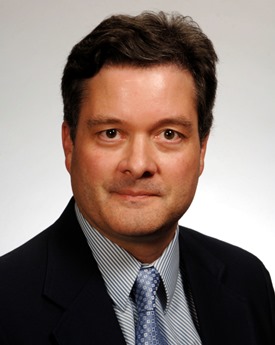An interdisciplinary team of researchers at Louisiana Tech University has discovered a novel nanocomposite formed by self-assembly of copper and a biological component that occurs under physiological conditions.
 Dr. Mark DeCoster
Dr. Mark DeCoster
The new nanomaterial shows promise for use in targeted drug delivery to treat chronic diseases, including cancer.
The team headed by Dr. Mark DeCoster, the James E. Wyche III Endowed Associate Professor in Biomedical Engineering at Louisiana Tech, has been able to find a method to synthesize the new material in liquid state. This would enable the scale of the synthesis to be controlled up or down as well as to promote growth of structures possessing larger features for easy observation.
The study results have appeared in the journal JoVE (Journal of Visualized Experiments) under the title “Generation of Scalable, Metallic High-Aspect Ratio Nanocomposites in a Biological Liquid Medium.” Since its publication, a number of universities across the globe has viewed the article hundreds of times.
“We are currently investigating how this new material interacts with cells,” said DeCoster. “It may be used, for example for drug delivery, which could be used in theory for fighting diseases such as cancer. Also, as a result of the copper component that we used, there could be some interesting electronics, energy, or optics applications that could impact consumer products. In addition, copper has some interesting and useful antimicrobial features.
Finally, as the recent environmental spill of mining waste into river systems showed us, metals, including copper, can sometimes make their way into freshwater systems, so our newly discovered metal-composite methods could provide a way to “bind up” unwanted copper into a useful or more stable form.
DeCoster
Two factors of this discovery astonished the research team. One factor was the high stability of the resulting copper nanocomposites not only in liquid, but also in dried form. The new nanomaterial is capable of maintaining its stability for years. “We have been carrying out this research for at least four years and have a number of samples that are at least two years old and still stable,” DeCoster said.
The other factor was that these composites were resistant to agglomeration, which can be defined as a process involving clumping or sticking together of a material.
This is of benefit because it allows us to work with individual structures in order to separate or modify them chemically. When materials stick together and clump, as many do, it is much harder to work with them in a logical way. Both of these aspects, however, fit with our hypothesis that the self-assembly that we have discovered is putting positively charged copper together with negatively charged sulfur-containing cystine.
DeCoster
The research discovery was a collaborative endeavour that included DeCoster and Louisiana Tech students at the bachelor, master and doctoral level. “The quality of my team in putting together a sustained effort to figure out what was needed to reproducibly carry out the new self-assembly methods and to simplify them really speaks well as to what can be accomplished at Louisiana Tech University,” DeCoster said. “Furthermore, the work is very multi-disciplinary, meaning that it required nanotechnology as well as biological and biochemical insights to make it all work, as well as some essential core instrumentation that we have at Louisiana Tech.”
According to DeCoster, the research work has several potential applications in the future.
The team is in conversation with other colleagues and partners to identify ways to analyze these nanocomposites for applications in bioengineering and larger composites that can be held in hand.
Our recent publication of the work could generate some interest and new ideas. We are working on new proposals to fund the research and to keep it moving forward. We are currently making these materials on an ‘as needed’ basis, knowing that they can be stored once generated, and if we discover new uses for the nanocomposites, then applications for the materials could lead to income generation through a start-up company that I have formed.
DeCoster
References